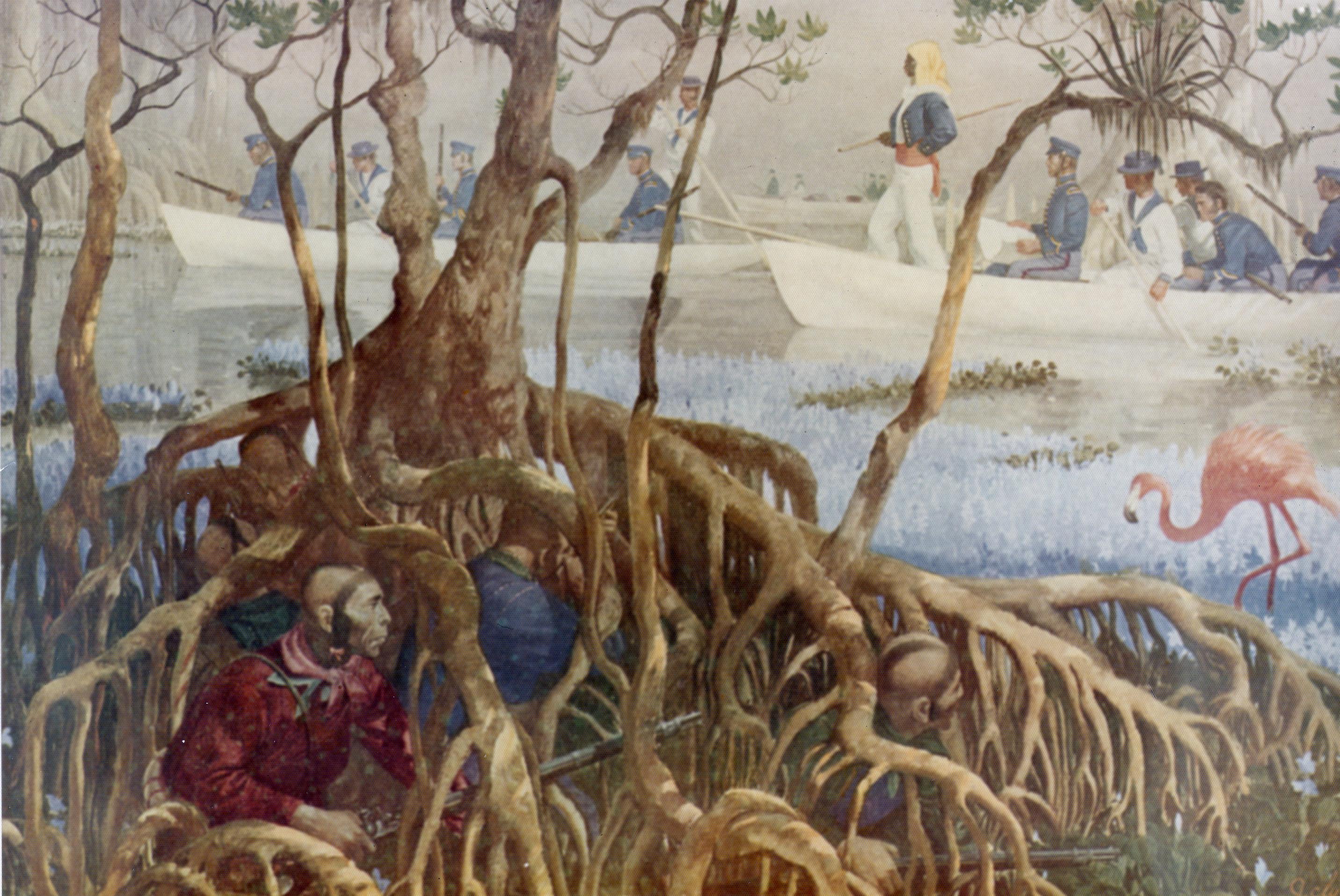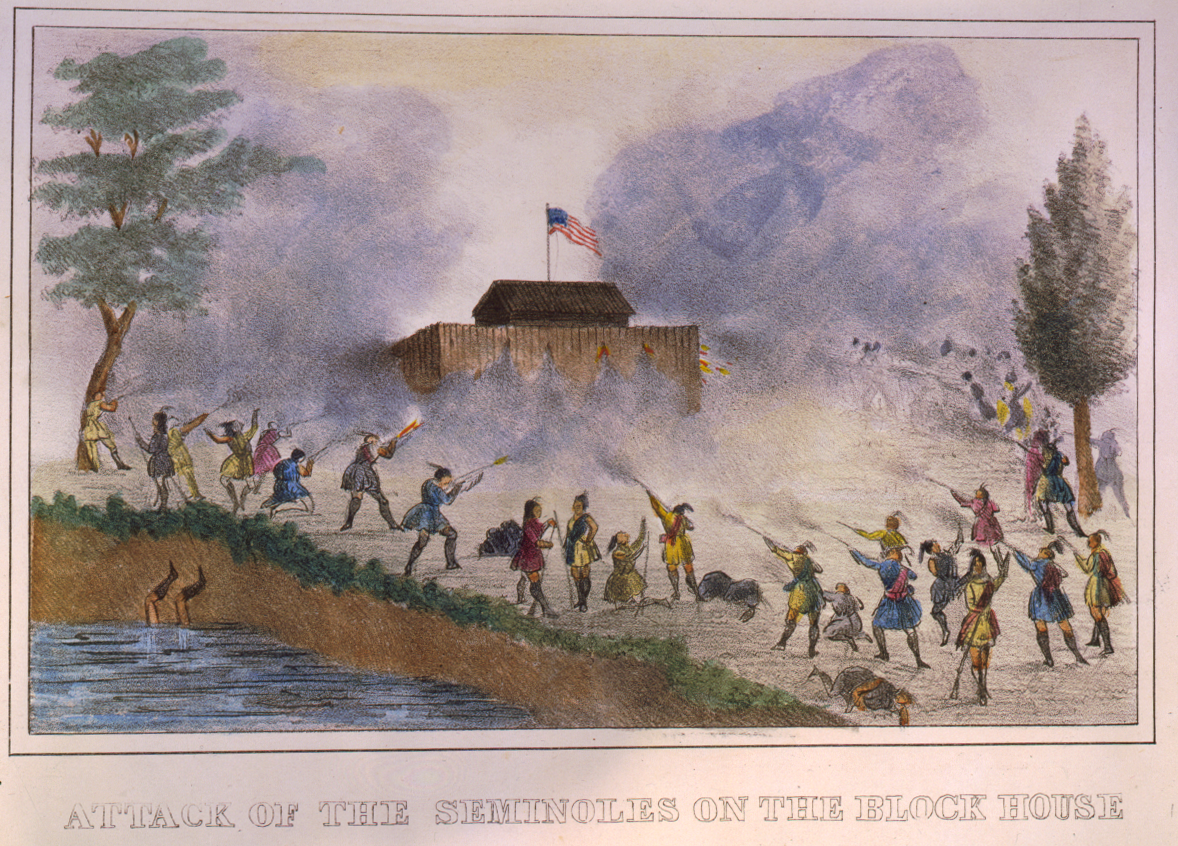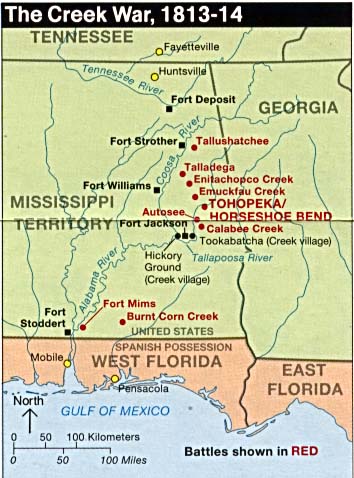|
Tecumseh's Rebellion
Tecumseh's War or Tecumseh's Rebellion was a conflict between the United States and Tecumseh's Confederacy, led by the Shawnee leader Tecumseh in the Indiana Territory. Although the war is often considered to have climaxed with William Henry Harrison's victory at the Battle of Tippecanoe in 1811, Tecumseh's War essentially continued into the War of 1812 and is frequently considered a part of that larger struggle. The war lasted for two more years, until 1813, when Tecumseh and his second-in-command, Roundhead, died fighting Harrison's Army of the Northwest at the Battle of the Thames in Upper Canada, near present-day Chatham, Ontario, and his confederacy disintegrated. Tecumseh's War is viewed by some academic historians as the final conflict of a longer-term military struggle for control of the Great Lakes region of North America, encompassing a number of wars over several generations, referred to as the Sixty Years' War. Background The two principal adversaries in the confli ... [...More Info...] [...Related Items...] OR: [Wikipedia] [Google] [Baidu] |
American Indian Wars
The American Indian Wars, also known as the American Frontier Wars, and the Indian Wars, were fought by European governments and colonists in North America, and later by the United States and Canadian governments and American and Canadian settlers, against various American Indian and First Nation tribes. These conflicts occurred in North America from the time of the earliest colonial settlements in the 17th century until the early 20th century. The various wars resulted from a wide variety of factors, the most common being the desire of settlers and governments for lands that the Indian tribes considered their own. The European powers and their colonies also enlisted allied Indian tribes to help them conduct warfare against each other's colonial settlements. After the American Revolution, many conflicts were local to specific states or regions and frequently involved disputes over land use; some entailed cycles of violent reprisal. As settlers spread westward across North America ... [...More Info...] [...Related Items...] OR: [Wikipedia] [Google] [Baidu] |
Sixty Years' War
The Sixty Years' War (1754–1815) was a military struggle for control of the North American Great Lakes region (North America), Great Lakes region, including Lake Champlain and Lake George (lake), New York, Lake George, encompassing a number of wars over multiple generations. The term ''Sixty Years' War'' is used by academic historians to provide a framework for viewing this era as a whole, rather than as isolated events. In 1998, more than 225 scholars from the United States, Canada, and Europe met at Bowling Green State University to examine the colonial history of the Great Lakes region, including the War of 1812. While acknowledging that these wars were fought by different peoples for different reasons, the attendees discovered aspects of a prolonged conflict that connected these wars as an interrelated history. French and Indian War (1754–1763) Canadians view this war as the American theater of the Seven Years' War, whereas Americans view it as an isolated American ... [...More Info...] [...Related Items...] OR: [Wikipedia] [Google] [Baidu] |
Third Seminole War
The Seminole Wars (also known as the Florida Wars) were three related military conflicts in Florida between the United States and the Seminole, citizens of a Native American nation which formed in the region during the early 1700s. Hostilities commenced about 1816 and continued through 1858, with two periods of uneasy truce between active conflict. The Seminole Wars were the longest and most expensive, in both human and financial cost to the United States, of the American Indian Wars. Overview First Seminole War The First Seminole War (1817-1818)-"Beginning in the 1730's, the Spaniards had given refuge to runaway slaves from the Carolinas, but as late as 1774 Negroes idnot appear to have been living among the Florida Indians." After that latter date more runaway slaves began arriving from American plantations, especially congregating around "Negro Fort on the Apalachicola River." Free or runaways, "the Negroes among the Seminoles constituted a threat to the institution of s ... [...More Info...] [...Related Items...] OR: [Wikipedia] [Google] [Baidu] |
Second Seminole War
The Second Seminole War, also known as the Florida War, was a conflict from 1835 to 1842 in Florida between the United States and groups collectively known as Seminoles, consisting of Native Americans in the United States, Native Americans and Black Indians in the United States, Black Indians. It was part of a series of conflicts called the Seminole Wars. The Second Seminole War, often referred to as ''the'' Seminole War, is regarded as "the longest and most costly of the American Indian Wars, Indian conflicts of the United States". After the Treaty of Payne's Landing in 1832 that called for the Seminole's removal from Florida, tensions rose until open hostilities started with Dade battle. For the next four years, the Seminole and the U.S. forces engaged in small engagements and by 1842 only a few hundred native peoples remained in Florida. The war was declared over on August 14, 1842. Background Bands from various tribes in the southeastern United States had moved into the uno ... [...More Info...] [...Related Items...] OR: [Wikipedia] [Google] [Baidu] |
Creek War Of 1836
The Creek War of 1836, also known as the Second Creek War or Creek Alabama Uprising, was a conflict in Alabama at the time of Indian Removal between the Muscogee Creek people and non-native land speculators and squatters. Although the Creek people had been forced from Georgia under the Treaty of Washington of 1826, with many Lower Creeks moving to the Indian Territory, about 20,000 Upper Creeks were still living in Alabama. The state acted to abolish tribal governments and extend state laws over the Creek. Chief Opothle Yohola appealed to the administration of President Andrew Jackson for protection from Alabama but he supported removal. The Creek signed the Treaty of Cusseta on 24 March 1832, which divided up Creek lands into individual allotments. Indian Affairs, Laws and Treaties, Wa ... [...More Info...] [...Related Items...] OR: [Wikipedia] [Google] [Baidu] |
Black Hawk War
The Black Hawk War was a conflict between the United States and Native Americans led by Black Hawk, a Sauk leader. The war erupted after Black Hawk and a group of Sauks, Meskwakis (Fox), and Kickapoos, known as the "British Band", crossed the Mississippi River, into the U.S. state of Illinois, from Iowa Indian Territory in April 1832. Black Hawk's motives were ambiguous, but he was apparently hoping to reclaim land sold to the United States in the disputed 1804 Treaty of St. Louis. U.S. officials, convinced that the British Band was hostile, mobilized a frontier militia and opened fire on a delegation from the Native Americans on May 14, 1832. Black Hawk responded by successfully attacking the militia at the Battle of Stillman's Run. He led his band to a secure location in what is now southern Wisconsin and was pursued by U.S. forces. Meanwhile, other Native Americans conducted raids against forts and colonies largely unprotected with the absence of the militia. Some Ho ... [...More Info...] [...Related Items...] OR: [Wikipedia] [Google] [Baidu] |
Winnebago War
The Winnebago War, also known as the Winnebago Uprising, was a brief conflict that took place in 1827 in the Upper Mississippi River region of the United States, primarily in what is now the state of Wisconsin. Not quite a war, the hostilities were limited to a few attacks on American civilians by a portion of the Winnebago (or Ho-Chunk) Native American tribe. The Ho-Chunks were reacting to a wave of lead miners trespassing on their lands, and to false rumors that the United States had sent two Ho-Chunk prisoners to a rival tribe for execution. Most Native Americans in the region decided against joining the uprising, and so the conflict ended after U.S. officials responded with a show of military force. Ho-Chunk chiefs surrendered eight men who had participated in the violence, including Red Bird, whom American officials believed to be the ringleader. Red Bird died in prison in 1828 while awaiting trial; two other men convicted of murder were pardoned by President John Quincy ... [...More Info...] [...Related Items...] OR: [Wikipedia] [Google] [Baidu] |
First Seminole War
The Seminole Wars (also known as the Florida Wars) were three related military conflicts in Florida between the United States and the Seminole, citizens of a Native American nation which formed in the region during the early 1700s. Hostilities commenced about 1816 and continued through 1858, with two periods of uneasy truce between active conflict. The Seminole Wars were the longest and most expensive, in both human and financial cost to the United States, of the American Indian Wars. Overview First Seminole War The First Seminole War (1817-1818)-"Beginning in the 1730's, the Spaniards had given refuge to runaway slaves from the Carolinas, but as late as 1774 Negroes idnot appear to have been living among the Florida Indians." After that latter date more runaway slaves began arriving from American plantations, especially congregating around "Negro Fort on the Apalachicola River." Free or runaways, "the Negroes among the Seminoles constituted a threat to the institution of ... [...More Info...] [...Related Items...] OR: [Wikipedia] [Google] [Baidu] |
Peoria War
During the War of 1812, the Illinois Territory was the scene of fighting between Native Americans and United States soldiers and settlers. The Illinois Territory at that time included the areas of modern Illinois, Wisconsin and parts of Minnesota and Michigan. Tensions in the Illinois Territory between U.S. settlers and Native Americans were on the rise in the years before the War of 1812.Robert J Holden, "Illinois Territory", in David S. Heidler and Jeanne T. Heidler, eds, ''Encyclopedia of the War of 1812'' (Santa Barbara, California: ABC-CLIO, 1997; ), 251–52. At Peoria, Potawatomi chief Main Poc was a supporter of the resistance movement of Shawnee prophet Tenskwatawa and his brother Tecumseh. Raids against American settlers in Illinois increased after the Shawnee brothers' loss at the Battle of Tippecanoe in the Indiana Territory in 1811. There were few U.S. Army soldiers this far west on the frontier. Ninian Edwards, the territorial governor, directed state militia ... [...More Info...] [...Related Items...] OR: [Wikipedia] [Google] [Baidu] |
Creek War
The Creek War (1813–1814), also known as the Red Stick War and the Creek Civil War, was a regional war between opposing Indigenous American Creek factions, European empires and the United States, taking place largely in modern-day Alabama and along the Gulf Coast. The major conflicts of the war took place between state militia units and the "Red Stick" Creeks. The United States government formed an alliance with the Choctaw Nation and Cherokee Nation (the traditional enemies of the Creeks), along with the remaining Creeks to put the rebellion down. According to historian John K. Mahon, the Creek War "was as much a civil war among Creeks as between red and white, and it pointed up the separation of Creeks and Seminoles". The war was also part of the centuries-long American Indian Wars. It is usually considered part of the War of 1812 because it was influenced by Tecumseh's War in the Old Northwest, was concurrent with the American-British portion of the war and involved m ... [...More Info...] [...Related Items...] OR: [Wikipedia] [Google] [Baidu] |
Sabine Expedition
The Sabine Expedition was an expedition approved by the United States Congress in 1806. It was led by Major General Edmund Pendleton Gaines. It consisted of volunteers provided by Alabama, Louisiana, Mississippi, and Tennessee, including militia from Fayetteville in Lincoln County or Athens in McMinn County. Their main goal was to protect the Sabine River, as the boundary between Spanish Texas and Louisiana Territory The Territory of Louisiana or Louisiana Territory was an organized incorporated territory of the United States that existed from July 4, 1805, until June 4, 1812, when it was renamed the Missouri Territory. The territory was formed out of the ... was undecided. See also * Military history of the United States References {{reflist Louisiana Territory Spanish Texas History of United States expansionism 1806 in the Territory of Orleans 1806 in New Spain 1806 in the United States ... [...More Info...] [...Related Items...] OR: [Wikipedia] [Google] [Baidu] |
Nickajack Expedition
The Nickajack Expedition in 1794 was a long-running battle fought from late summer to fall between American frontiersmen and the Chickamauga Cherokee. This Cherokee band had resisted the increasing American encroachment into their territory and raided American settlements in the region. The military expedition was a decisive success for the American settlers of what was then called the Southwest Territory and surrounding regions. It eventually became known to Americans as the "Last Battle of the Cherokee". Other Cherokee defeats followed shortly, and the US forced them to agree to another treaty ceding some of their land. A total of 39 Cherokee chiefs and leaders, including Chickamauga, signed the 1798 Treaty of Tellico, ceding a large territory in East Tennessee to the United States. Background Following a 1777 peace treaty between Native Americans and the American settlers of the Overhill settlements west of the Appalachian Mountains during the American War of Independenc ... [...More Info...] [...Related Items...] OR: [Wikipedia] [Google] [Baidu] |







